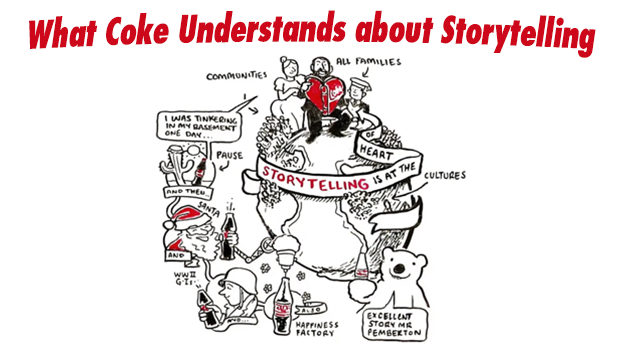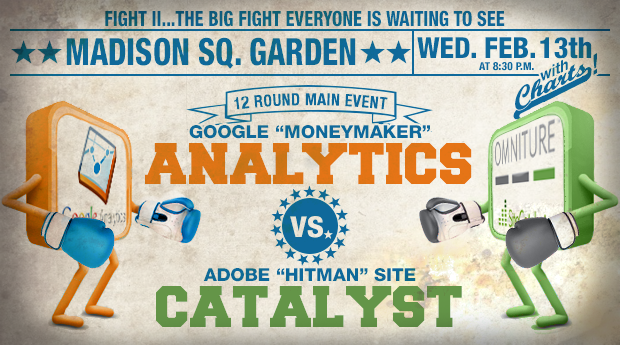Even Superman Needs a Hug

They can be seen in every office. Early in the morning. Late at night. Sending emails at 3:30 a.m. when the rest of us are sleeping peacefully in our beds. They are the office super people, taking on tremendous challenges and working harder, longer and smarter than anyone else to ensure the greatness of all, often without thanks.
We think it's time to change this.
Coca-Cola & Happiness: A Love Story

Millennia from now, an alien archaeologist will sift through the sepulchral remains of Earth’s greatest cities, from Jakarta to Istanbul to New York, and see the same red and white banner emblazoned on the sides of buildings, in gas station windows and on tractor trailers. He will have no choice but to assume the people of Earth lived and died united under a single world government—an empire, as benevolent as it was far-reaching, intent on bringing happiness to its citizens. And, in a way, he’d be right. More than any government or religion, Coca-Cola is the world’s biggest empire.
Warren Buffett, the largest stakeholder in the company, put it best: it’s the most powerful brand in the world, universally liked, moderately priced and per capita consumption goes up almost every year in almost every country. There’s no other product like it. It is indeed staggering to consider that, while the world’s best brands are technological, industrial or business (IBM, Microsoft, Google, GE), a beverage company tops them all.
So, imagine you have the most powerful brand in history, your name is recognized in every language, you have a product that not only doesn’t need to change but can’t, and your target market is planet Earth. You can pretty much just coast, right?
No way.
For Coke, the quest for brand power is never over, and, after over a century of dominance, there isn’t a single entity in the world more powerful. In fact, the only things bigger than Coke are universal, abstract concepts like hope and love and happiness—oh wait. Coke cornered the market on that, too.
What Brands Can Learn from Presidents' Day

There’s a famous anecdote about President William Taft that claims his father was once viciously slandered by a gossip publication when the future president was a young man. The editor of the publication in question had managed to dodge every libel lawsuit that came his way for his misdeeds, to the point where people in the community had more or less given up on preventing him from printing falsehoods. That is, until Taft approached him one day in defense of his father and delivered an awesome, movie trailer-worthy line:
“My name is Taft,” he said, “and my purpose is to whip you.”
Then he pummeled the guy so badly that the editor fled town in terror the next day.
I know, I know. Violence isn’t the answer and we know that now. But that is a COOL story with a powerful message about standing up to bullies. In fact, it’s just one of many things that we all stand to learn from the amazing and fascinating men that have served as President of the United States.
Google Analytics vs. Adobe Site Catalyst Round 2

“Float like a butterfly, sting like a bee. His hands can’t hit what his eyes can’t see." While Muhammad Ali’s famous quote addressed his strategy to defeat the reigning heavyweight titleholder, the underlying message is just as applicable when considering Google’s approach to becoming the Analytics champ.
For a company worth billions in assets and infrastructure, Google has remained just as agile and unpredictable as in its heyday as a tech start up. By constantly offering new services and nimbly adjusting existing features in response to customer needs, Google remains an unexpected contender—hitting hard and hitting where it counts.
Google has announced many exciting new features coming for Analytics Premium in 2013, such as a new measurement protocol, custom metrics and better support for offline traffic and conversions over multiple devices. SiteCatalyst, however, has already rolled out many improvements in areas such as reporting with its recently released version 15.
Does Google Analytics Premium have the juice to knock out Adobe’s updated SiteCatalyst, or does Adobe’s product have the upper hand? As promised, we’re taking another look at how our competitors stack up to see which analytics platform reigns supreme.
Hashtags: You're Doing It Wrong

Twitter can be a great way to build an audience for your content, and I’d say it’s pretty widely agreed upon that proper hashtag usage is a big part of being successful there. The problem is, most "hashtag advice" focuses mostly on figuring out what users are talking about. It’s about deducing hashtag origins and measuring activity, then picking the ones with the most buzz.
And that’s great. You should do those things. But that’s typically where the useful advice ends. “Find out what people are talking about and join the conversation. Go ahead. Get in there. Good things will happen.”
Unfortunately, "joining a conversation" can mean a lot of things. If I’m at lunch and I overhear a couple at the next table talking about macaroni and cheese and I lean over and tell them that I have a fantastic recipe that they absolutely must try, you could say I’ve successfully joined the conversation. But the fact is that just because they were talking about macaroni and cheese doesn’t mean they care what I have to say about it. Who am I? Just some weirdo eating alone at a restaurant, that’s who.
My problem is that I remain unconvinced that people are actually clicking hashtags. It seems the people who include hashtags to get seen far outnumber the people who use them to find great content.
How Super Bowl Advertisers Missed the Multi-Device Mark

Return on invest for a Super Bowl ad used to be constrained to a scant 30 seconds to impress your captive audience, and, if you were lucky enough to make it into the top 10, you might recoup your multi-million dollar cost. But a little thing called the World Wide Web, with its social networks, videos and hashtags, has changed the game. The Super Bowl is no longer a one-night affair, but rather the centerpiece in a longer, more thoughtful and engaging strategy. Unfortunately, marketers still don't understand the nuances of a multi-device world, treating social media as an afterthought, instead of a way to make a bigger impact.